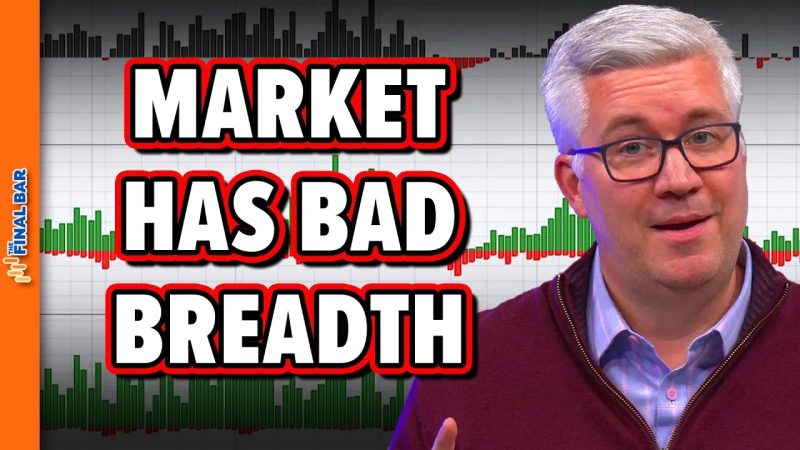Market breadth refers to the number of individual stocks advancing versus declining within a particular market index. It is one of the many indicators used by investors and analysts to gauge the overall health and direction of the stock market. In a healthy market, a broad-based rally where a majority of stocks are participating is typically viewed as a positive sign. On the other hand, poor market breadth, where only a handful of stocks are driving the market higher while the majority are lagging, can be a cause for concern.
One potential reason for poor market breadth is the concentration of gains in a few high-flying stocks. This scenario can mask underlying weakness in the broader market as investors flock to a handful of popular companies, leaving many others struggling to keep up. This lack of participation from a majority of stocks could be a sign of sector rotation, where money is flowing out of certain areas of the market and into others. For example, during times of economic uncertainty, investors may rotate out of high-risk sectors like technology and into more defensive sectors like utilities and consumer staples, leading to poor breadth in the technology sector.
Another factor that can contribute to poor market breadth is the influence of passive investing and index funds. With the rise of passive investment strategies, particularly through exchange-traded funds (ETFs), a significant portion of market trading is driven by the performance of a few mega-cap stocks that dominate popular indexes. As these index funds buy or sell shares based on the stocks’ weighting in the index, it can create a situation where only a handful of stocks are driving the market higher, even as many others are struggling.
Investors should be wary of poor market breadth as it can signal underlying weakness and potential trouble ahead. When the market is being propped up by a narrow group of stocks, it may not be sustainable in the long run. Diversification and careful stock selection become even more critical during times of poor breadth, as not all stocks will benefit from the market’s rise.
While poor market breadth is a concern, it’s essential for investors to consider multiple indicators and factors when making investment decisions. Market breadth is just one piece of the puzzle and should be used in conjunction with other technical and fundamental analysis tools to get a comprehensive view of the market environment. By staying informed and vigilant, investors can navigate through periods of poor market breadth and position themselves for long-term success in the stock market.
